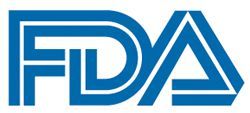News
Article
FDA Approves Zolbetuximab Plus Chemo for CLDN18.2+ Gastric or GEJ Adenocarcinoma
Author(s):
Key Takeaways
- Zolbetuximab-clzb is approved for HER2-negative gastric or gastroesophageal junction adenocarcinoma with Claudin 18.2 positivity.
- SPOTLIGHT trial showed improved PFS and OS with zolbetuximab plus mFOLFOX6 compared to placebo.
The FDA approved zolbetuximab plus chemotherapy for advanced, CLDN18.2-positive gastric or gastroesophageal junction adenocarcinoma.
FDA

The FDA has approved zolbetuximab-clzb (Vyloy) in combination with fluoropyrimidine- and platinum-containing chemotherapy for the first-line treatment of adult patients with locally advanced unresectable or metastatic, HER2-negative gastric or gastroesophageal junction (GEJ) adenocarcinoma whose tumors are Claudin 18.2 (CLDN18.2) positive, as determined by an FDA-approved test.1,2
The regulatory decision was supported by data from the phase 3 SPOTLIGHT (NCT03504397) and GLOW (NCT03653507) trials.
In SPOTLIGHT, patients treated with zolbetuximab plus mFOLFOX6 (n = 283) experienced a median progression-free survival (PFS) of 10.6 months (95% CI, 8.9-12.5) compared with 8.7 months (95% CI, 8.2-10.3) for those given placebo plus chemotherapy (n = 282; HR, 0.751; 95% CI, 0.598-0.942; 1-sided P = .0066).1,3 The median overall survival (OS) was 18.2 months (95% CI, 16.4-22.9) in the zolbetuximab arm vs 15.5 months (95% CI, 13.5-16.5) in the placebo arm (HR, 0.750; 95% CI, 0.601-0.936; 1-sided P = .0053).1
In GLOW, the combination of zolbetuximab and CAPOX (n = 254) generated a median PFS of 8.2 months (95% CI, 7.5-8.8) vs 6.8 months (95% CI, 6.1-8.1) for placebo plus CAPOX (n = 253; HR, 0.687; 95% CI, 0.544-0.866; 1-sided P = .0007).1,4 The median OS was 14.4 months (95% CI, 12.3-16.5) and 12.2 months (95% CI, 10.3-13.7), respectively (HR, 0.771; 95% CI, 0.615-0.965; 1-sided P = .0118).1
"While there have been advances in the first-line treatment of locally advanced unresectable and metastatic gastric and GEJ cancers in the last several years, there is still a tremendous unmet need among our patients," Samuel J. Klempner, MD, an associate professor at Harvard Medical School and a medical oncologist at Massachusetts General Hospital in Boston, stated in a news release.2 "The approval of [zolbetuximab], based on the pivotal phase 3 SPOTLIGHT and GLOW trials, brings forward a novel biomarker and new therapy for patients whose tumors are CLDN18.2 positive, and for those on the frontlines of treatment decision-making."
SPOTLIGHT Design
The global, randomized, placebo-controlled, double-blind SPOTLIGHT trial enrolled patients at least 18 years of age with CLDN18.2-positive, HER2-negative, previously untreated, locally advanced unresectable or metastatic gastric or GEJ. adenocarcinoma. CLDN18.2 positivity was defined as at least 75% of tumor cells expressing moderate-to-strong membranous CLDN18 staining per central immunohistochemistry.3
Other key inclusion criteria included radiologically evaluable disease per RECIST 1.1 criteria, an ECOG performance status of 0 or 1, and adequate organ function.
Patients were randomly assigned 1:1 to receive zolbetuximab at 800 mg/m2 on day 1 of cycle 1, followed by 600 mg/m2 on day 22 of cycle 1 and days 1 and 22 of subsequent cycles in combination with mFOLFOX6; or placebo plus mFOLFOX6. In both arms, mFOLFOX consisted of folinic acid at 400 mg/m2, fluorouracil at 400 mg/m2 bolus followed by 2400 mg/m2 in a 46- to 48-hour infusion, and oxaliplatin at 85 mg/m2 on days 1, 15, and 29 for up to 4 42-day cycles.
Those who did not experience disease progression after 4 cycles of mFOLFOX6 continued with zolbetuximab or placebo plus folinic acid and fluorouracil, at investigator discretion. Zolbetuximab or placebo were continued until disease progression, unacceptable toxicity, or other discontinuation criteria were met.
PFS per RECIST 1.1 criteria served as the trial's primary end point. Secondary end points included OS and time to confirmed deterioration.
GLOW Overview
In the global, randomized, double-blind GLOW trial, investigators enrolled adult patients with CLDN18.2-positive, HER2-negative, previously untreated, locally advanced unresectable or metastatic gastric/GEJ tumors.4 Patients needed to have radiologically evaluable disease per RECIST 1.1 criteria, an ECOG performance status of 0 or 1, and adequate organ function. The definition of CLDN18.2 positivity mirrored the criteria from SPOTLIGHT.
Patients were randomly assigned 1:1 to zolbetuximab at 800 mg/m2 on cycle 1, day 1, followed by 600 mg/m2 on day 1 of subsequent 21-day cycles, plus CAPOX; or placebo plus CAPOX. CAPOX in both arms was given as oral capecitabine at 1,000 mg/m2 twice per day on days 1 to 14 of each cycle and oxaliplatin at 130 mg/m2 on day 1 of each cycle for up to 8 cycles. Patients then continued with zolbetuximab or placebo, and capecitabine could be continued at investigator discretion. Treatment continued until disease progression, unacceptable toxicity, or other discontinuation criteria were met.
Investigator-assessed PFS per RECIST 1.1 criteria was the primary end point. Secondary end points included OS and time to confirmed deterioration.
Safety and Recommended Dosing
The most common serious adverse effects (AEs) reported in at least 2% of patients treated in the zolbetuximab arm in SPOTLIGHT included vomiting, nausea, neutropenia, febrile neutropenia, diarrhea, intestinal obstruction, pyrexia, pneumonia, respiratory failure, pulmonary embolism, decreased appetite, and sepsis.1In GLOW, The most common serious AEs that occurred in at least 2% of patients comprised vomiting, nausea, decreased appetite, decreased platelet count, upper gastrointestinal hemorrhage, diarrhea, pneumonia, pulmonary embolism, and pyrexia.
The recommended dose of zolbetuximab is 800 mg/m2 for the first dose, then 600 mg/m2 once every 3 weeks or 400 mg/m2 once every 2 weeks for subsequent doses.
References
- FDA approves zolbetuximab-clzb with chemotherapy for gastric or gastroesophageal junction adenocarcinoma. FDA. October 18, 2024. Accessed October 18, 2024. https://www.fda.gov/drugs/resources-information-approved-drugs/fda-approves-zolbetuximab-clzb-chemotherapy-gastric-or-gastroesophageal-junction-adenocarcinoma
- Astellas' Vyloy (zolbetuximab-clzb) approved by U.S. FDA for treatment of advanced gastric and GEJ cancer. News release. October 18, 2024. Accessed October 18, 2024. https://www.prnewswire.com/news-releases/astellas-vyloy-zolbetuximab-clzb-approved-by-us-fda-for-treatment-of-advanced-gastric-and-gej-cancer-302280716.html
- Shitara K, Lordick F, Bang YJ, et al. Zolbetuximab plus mFOLFOX6 in patients with CLDN18.2-positive, HER2-negative, untreated, locally advanced unresectable or metastatic gastric or gastro-oesophageal junction adenocarcinoma (SPOTLIGHT): a multicentre, randomised, double-blind, phase 3 trial. Lancet. 2023;401(10389):1655-1668. doi:10.1016/S0140-6736(23)00620-7
- Shah MA, Shitara K, Ajani JA, et al. Zolbetuximab plus CAPOX in CLDN18.2-positive gastric or gastroesophageal junction adenocarcinoma: the randomized, phase 3 GLOW trial. Nat Med. 2023;29(8):2133-2141. doi:10.1038/s41591-023-02465-7










